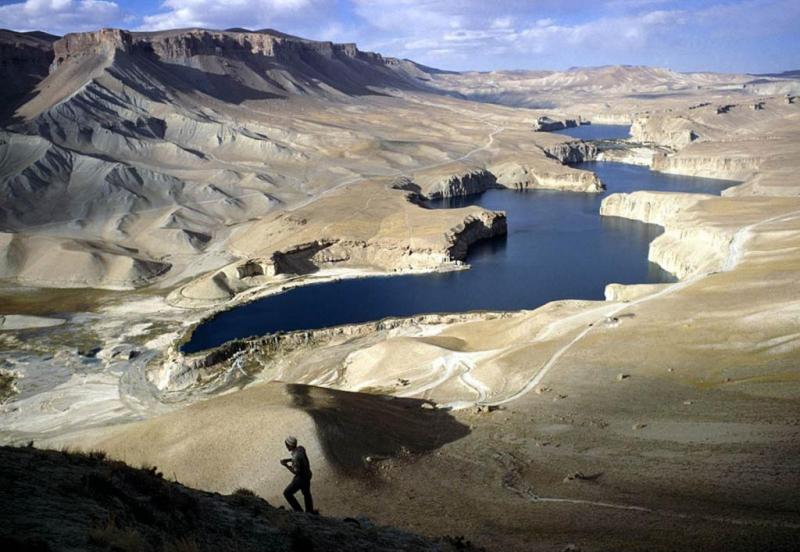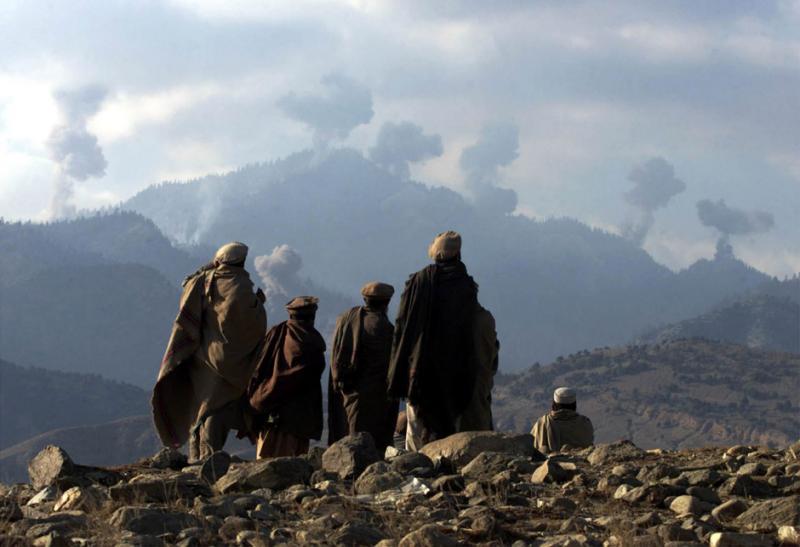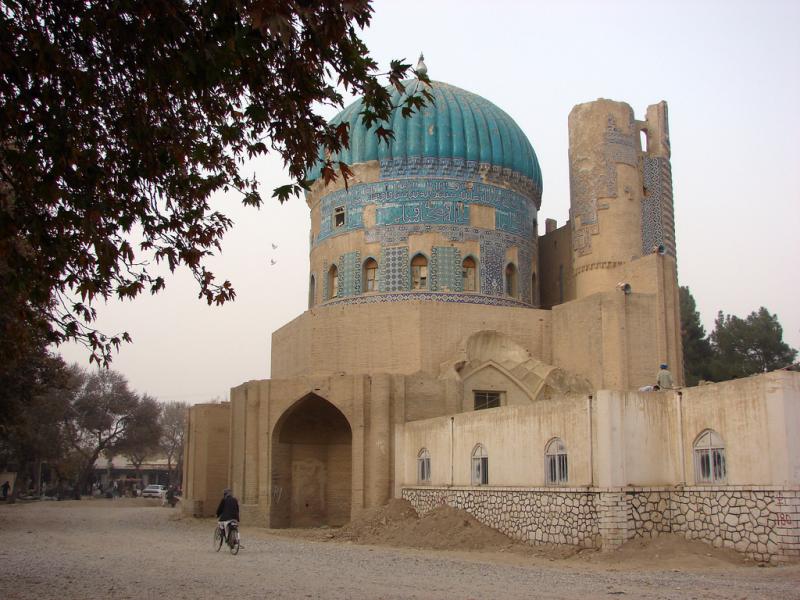5 reasons to visit Afghanistan
Afghanistan is one of the most dangerous countries in the world, and therefore is not popular among tourists. But the most intrepid travelers will be rewarded with a truly amazing sights, preserved in the ancient land of Afghanistan.
Centuries “place bright light” (literally translated as the name “Bamiyan”) was a major stop on the Silk Road. In those days, when the harsh Afghanistan was called Bactria fertile in the valley leading through the Hindu Kush mountain range, flocked not only traders but also Buddhist monks. Preaching the doctrine of the Enlightened One, they were detained for many years, cutting in the rocks cells and painting the marvelous religious scenes. Many legends are told about their most significant creation – the highest in the world of sacred images of the divine essence. One legend even prescribes the establishment of two giant Buddhas, towering at 37 and 55 meters, Noah himself. Many centuries guarded peace travelers majestic statues Zang-Cal and Shah-moon carved in deep niches into the rock and decorated with ancient carvings. But in March 2001, the world lost a unique cultural heritage that has survived the invasion of hordes of Genghis Khan, and the expansion of the Muslim state Ghaznavids. Bamiyan Buddhas were mercilessly bombed Taliban militants, as well as a stone spiral staircase leading to the hidden temples behind them. Now the ruins are under UNESCO protection, carries out scientific research.
Buddha of Bamiyan
Many wars and deaths have seen Afghan land has often been the subject of bloody territorial disputes. Rich heritage of the once famous Sunni dynasty Gurids, managed in the 12th century to conquer the whole of Afghanistan, and northern India, leaving only the peak Dzhamskogo minaret. Few of his contemporaries can boast that he had seen with his own eyes the monument of former greatness Gorska capital Firuzkuh: because of incessant wars and remoteness from settlements up to the gorge is possible not everyone. Unbelievable but true: the ruins of the city Firuzkuh destroyed by the nomads of Genghis Khan in 1221, lost by seven centuries, and with them and minaret, built to commemorate the victory over the state of the Ghaznavids. Temple towering almost two kilometers above sea level, was rediscovered only in 1886, and his first photo appeared in 1943. Detailed study Dzhamskogo minaret and found him near the remnants of the Muslim and Jewish cemeteries and the palace prevented nature itself: there are frequent earthquakes and floods. In 2002, the landmark, built of brick and decorated with blue terracotta tiles with Islamic motifs, was inscribed on the UNESCO list.
Dzhamsky minaret
Endless war battles and dangerous proximity of terrorist groups and markedly spoiled tourist attraction surprisingly picturesque corner, hidden in the highlands of the Hindu Kush. Those who dare to visit the lakes of Bande Amir, under the protection of the state and received the status of a national park, say: this place looks like a mirage traveler lost in the vast desert. Turquoise chain of six reservoirs famous unusual beauty: flawless blue water enriched with carbon dioxide divided, though natural dams, bare limestone cliffs. Each of the lakes, which lie in an area of 230 square miles, zest. The diameter of the miniature, Banda Paneer does not exceed one hundred meters, and the length of the largest, Pande-Zulfugar reaches 6.5 km. Most picturesque Mirror Lake Band-hub (dam of fear) is not as harmless as it seems: the depth of the dark like spilled ink, water is 150 meters. Long way to Bande Amir, located at an altitude of about 3 km above sea level, it is worth the effort: the natural beauty delights the eye and crystal clear air fills the vital forces of the body.
Tora Bora
Intricate maze of caves at a depth of about 400 meters, located a few tens of kilometers to the south Dzhelabada, not associated with any cultural or historical heritage, but it is known to the whole world. Impregnable fortress, created by nature, was used as a base of Mujahideen, which was hiding Osama bin Laden. Stronghold of terrorists many times subjected to siege, but not so easy to take Tora Bora. Back in 1980 this place was virtually unknown, but is full of secrets dushmans base, and years later, due to the huge number of assaults gained fame cleaner Panjsher Valley. Well fortified, providing terrorist weapons in all regions of Afghanistan and attacked Russian and Americans. As part of Operation “Flurry” of the gorge dropped bombs and artillery fire sounded. Pick up ammunition expelled from Tora Bora dushmans joint Russian military forces and Afghans blew casemates cave warehouse, trying to do away with him forever. Yes, there it was, more than once used the Mujahideen shelter that can protect even against nuclear attack. Only in 2001 that the Americans had made the most famous assault cave network, which became another important chapter of military history.
Scientists are still wondering when was born the ancient capital of Bactria, which was born Zarathustra himself. One of the legends of Balkh attributes the creation of Alexander the Great, the other – the mythical ruler of ancient Iran, named Luhrasb third says that even before Alexander City rules man named Zoroaster. Many important events connected with the settlement founded south of the Amu Darya River, one great conqueror of antiquity has equipped its headquarters here and married, and the other, Genghis Khan, with his face close to leveling the ground. Balkh had visited a center of Buddhist culture and Zoroastrianism, the stronghold of the Timurid dynasty of the Samanids and the administrative center of Afghan Turkestan. Over thousands of years of the city that was studded with dozens of luxurious palaces and exquisite temples, lost a large part of the cultural heritage, but now full of attractions. In the north-east lie the ruins of the ancient settlement of Bala Hissar, driving from Mazar-i-Sharif – the remains of a Buddhist monastery and stupa recorded in the chronicles 630 years, and in the center – a medieval tomb mosque theologian Hoxha Parsis, grave Rabia Balkhi Islamic poet and debris Said Subhankulihana madrassas.







